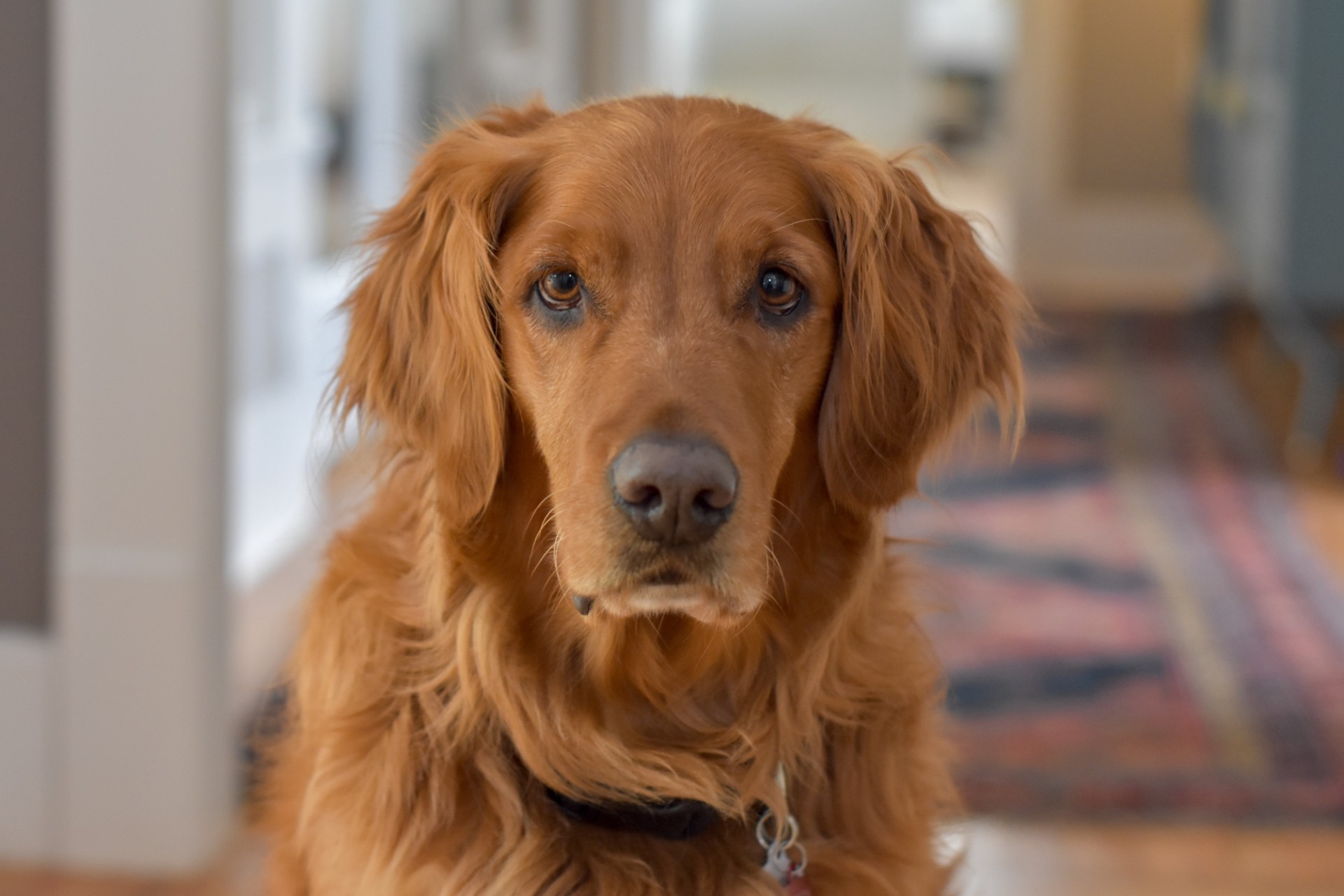Your golden retriever is the light of your life, but sometimes that energy can be a little much. That’s why you need handy guides on potty-training and leash-training your golden retriever. Now, it’s time to think about obedience training, and luckily, there are some things you can work on at home, whether your golden is a puppy or a senior.
Golden retrievers need stimulation and exercise, making training exercises the perfect way to satisfy curiosity, expend energy, and encourage bonding. Here’s what you need to know to handle golden retriever training at home.

Why start obedience training
Obedience training helps establish you as the leader of the pack. It also helps teach them manners and what to expect as a member of your household. Goldens will only get bigger and more excitable, so it’s essential to teach these basic manners as soon as possible.
Puppy training covers a variety of things, from basic commands to elaborate commands for competitions. It offers more than just manners, however. It can establish a long-lasting bond between you and your furry friend.
It’s also mentally stimulating for your golden, which could relieve excess energy and discourage behavior issues from boredom or separation anxiety. It helps them feel useful and challenged, tapping into a golden’s natural abilities.
The basic commands
When you start with obedience training, there’s no need to overwhelm yourself or your dog. These basic commands can help keep your golden on track and cover a lot of ground.
- Sit — This is one of the first commands you can teach. Begin by putting gentle pressure on your golden’s hindquarters until he or she sits. Reward and praise your golden until it happens consistently.
- Stay — Stay helps keep your pup out of the way when necessary. Begin with the “sit” command and back up a few steps. Wait a short time and reward your golden. You can increase the distance and time slowly.
- Come — A vital command for any time, this one can happen after “stay.” When your golden stays consistently, call your dog. Practice this one in a variety of settings until consistent. You can also use a leash and tug gently to encourage an understanding of the command.
- Heel — This command helps make walks more enjoyable. Begin in a neutral space and use the leash to hold your retriever in position. Walk a few steps and say “heel” to pull your dog back in position. Increase time and go for more interesting walks as your golden masters it.
- Down — Once your dog manages “sit,” you can extend it into the down command. From a sitting position, direct your dog’s nose with a treat by drawing it from the air to the ground, encouraging your dog to drop.
Practice these commands until your dog is consistent. Even if your golden knows these commands inside and out, continue training as a fun exercise and bonding ritual before your dog gets treats or is fed.
Advanced commands
Once your dog has mastered the simple commands, you can move on to more complex ones. Some examples might be “roll over,” “up,” or agility commands on a course. Take a look at what your lifestyle is like and some things you’d like your golden to do.
These unique circumstances can form the basis of your advanced commands. Remember to keep things fun and be creative about what you teach your pet. It could turn into a fun ritual for your golden and could build a lifetime of memories.
Some training tips
Here are some things to keep in mind as you begin home obedience training. These tips can help you smooth out obstacles and keep everything positive.
- Focus on the positive — Dogs don’t respond to negative stimuli well, so keep things positive. Rewarding the behavior you want to see, rather than punishing what you don’t like, will get you better results.
- Start small — The very first command may take a while because your puppy or adult dog doesn’t have an obedience framework. Don’t get discouraged and work slowly. As your dog gets better at the first command, the subsequent ones will come easier.
- Be consistent — You can’t do some training for an hour one day, skip the next week, and then 10 minutes the next time and expect your golden to get it. Set a specific amount of time to work on it every single day to help establish the commands.
- Start with exercise — Take your dog on a walk or play a Frisbee game to help alleviate some of your pet’s natural energy. Expending this energy can help your golden concentrate and learn.
- Establish lifetime rules — Ensure that the rules and boundaries you set will be consistent throughout your dog’s lifetime. If you don’t want your pet on furniture or in a certain room, that’s final. Don’t expect your golden to understand nuance or circumstances.
Training is a vital part of a dog’s life
This puppy training is a vital part of your pet’s life. It can ensure that your golden retriever understands rules and boundaries for a lifetime of well-being. These commands improve your relationship and help your dog understand what to expect.
Be patient, and stay positive. Your golden wants to please you and loves the time you’re spending together. You can create an enriching environment and help your dog bond with your family. Start your relationship off right with simple obedience training at home and reap a lifetime of benefits.
Editors' Recommendations
- 5 surefire ways to keep your dog off your bed and get a good night’s sleep
- 7 dog training podcasts we’re obsessed with
- 4 effective ways to house-train your stubborn little Chihuahua
- Video: Dog befriends bike thief (or why golden retrievers shouldn’t be guard dogs)
- Video: Adorable dog thinks the TV wants to play fetch



